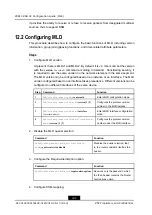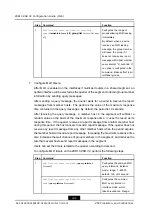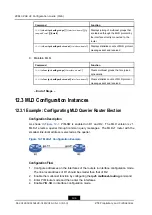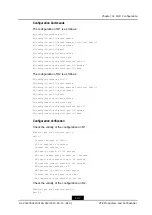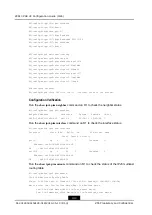
ZXR10 ZSR V2 Configuration Guide (IPv6)
it provides the ability to receive or refuse to receive packets from designated multicast
sources, thus to support SSM.
12.2 Configuring MLD
This procedure describes how to configure the basic functions of MLD, including version
information, group joining/leaving functions, and timer-related attribute parameters.
Steps
1.
Configure MLD version.
At present, there is MLDv1 and MLDv2. By default, it is v2. Users can set the version
with the
version
<
version
> command according to demand. Considering security, it
is required to use the same version on the network elements in the same segment.
The MLD version can be configured based on an instance or an interface. The MLD
version configured based on an interface takes precedence. Different versions can be
configured on different interfaces of the same device.
Step
Command
Function
1
ZXR10(config-mcast-ipv6)#
router mld
Enters MLD configuration mode.
2
ZXR10(config-mcast-ipv6-mld)#
version
{
1
|
2
}
Configures the protocol version
number in the MLD instance.
3
ZXR10(config-mcast-ipv6-mld)#
interface
<
interface-name
>
Enters MLD interface configuration
mode.
4
ZXR10(config-mcast-ipv6-mld-if-interface-
name)#
version
{
1
|
2
}
Configures the protocol version
number under the MLD interface.
2.
Disable the MLD querier election.
Command
Function
ZXR10(config-mcast-ipv6-mld-if-interface-
name)#
querier-election disable
Disables the querier election, that
is, the router considers itself as the
querier.
3.
Configure the Require-Alert-Option option.
Command
Function
ZXR10(config-mcast-ipv6-mld)#
require-alert-options
Receives only the packets in which
the IPv6 header contains the Router
Alert options option.
4.
Configure SSM-mapping.
12-2
SJ-20140504150128-018|2014-05-10 (R1.0)
ZTE Proprietary and Confidential















